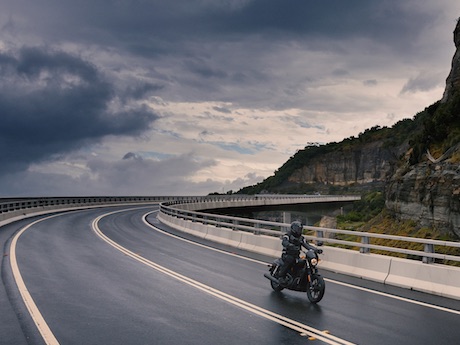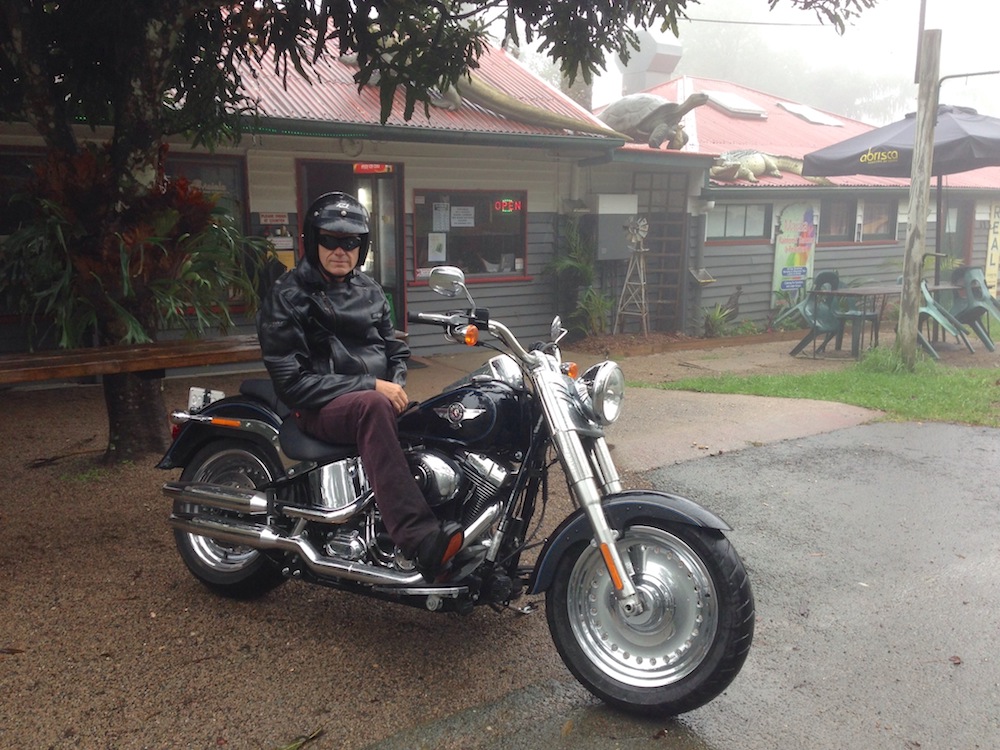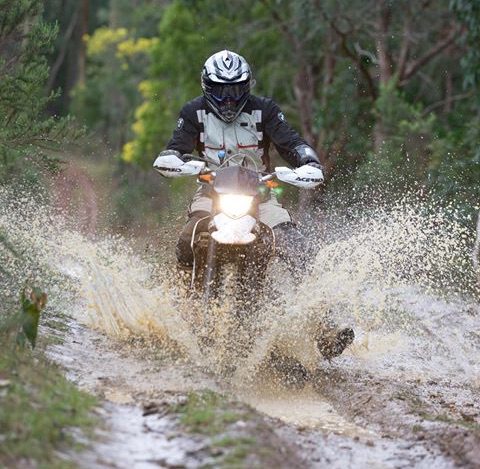What is the best motorcycle gear for riding in wet weather? Unfortunately, there is no simple answer.
It depends on the weather, how far you are riding, where you are going, the type of bike you are riding etc. Click here to read about Murphy’s Law of riding in the rain for a laugh.
Wet weather
If l’m riding on a hot day with the occasional storm I may not even stop to put gear on as the rain just acts as a type of air conditioning.
When the storm stops, the moisture in your gear will dry off in about 5-10 minutes if you keep going, anyway.
Also, if I’m riding a bike with a decent windscreen, I’ll simply huddle up behind the screen and keep going. It’s only when you stop on such a bike that you get wet.
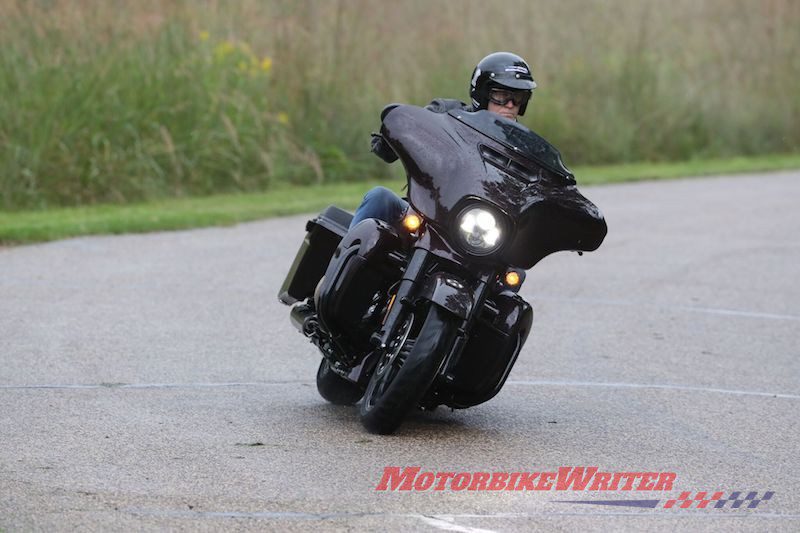
If I’m on a short ride, I may decide to just stop and have a coffee to wait out the passing weather.
But if I’m on a long trip and will be in the saddle for hours, wet weather, especially in winter, can turn into annoying and fatiguing puddles in your crutch unless you have decent wet weather gear.
There are three main types of wet weather riding gear.
- Old-fashioned rain coat and wet pants that go over the top of your gear;
- Waterproof inner liners that zip in and out of your jacket and pants; and
- Laminated jackets and pants that are both weatherproof and breathable.
Waterproof versus weatherproof
Before we go into the advantages and disadvantages of each of the above, let’s first talk about “waterproof” and “weatherproof”.
Don’t be fooled into thinking something that is claimed to be weatherproof will keep you dry.
It will only protect you from light rain for a short period of time.
To check waterproof ability, check the label for an “IP rating” which stands for “Ingress Protection”.
It consists of two numbers. The first from 0-6 measures protection from foreign bodies such as dust, while the second from 0-9K measures resistance to water.
If you pour a bit of water over an item of clothing it may bead, rather than saturating the material.
Don’t be fooled into thinking it is waterproof. It could just have a waxy or water-resistant coating.
This will have little or no waterproofing effect when you are riding. A good example is waxed cotton gear. It works for a short time, then almost draws water in like a sponge!
Furthermore, it will gradually wear out and need reapplication, especially after a ride in the rain or after washing.
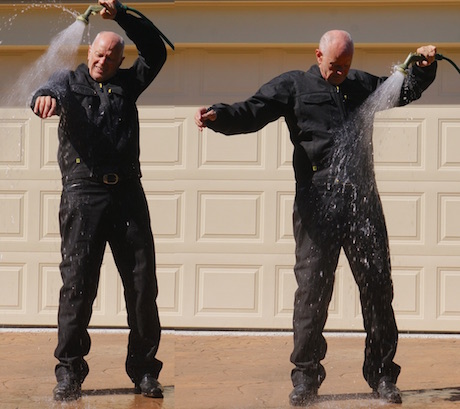
I’ve also tested some gear by wearing it and being hosed at close quarters. While I stayed dry, the same gear did not work when I was riding as the pressure and duration of rain on a ride is much higher than a quick hose-down.
To be truly waterproof on a motorcycle where rain is hitting you at speed, you need a moisture IP rating of 6 and above.
Rain coating
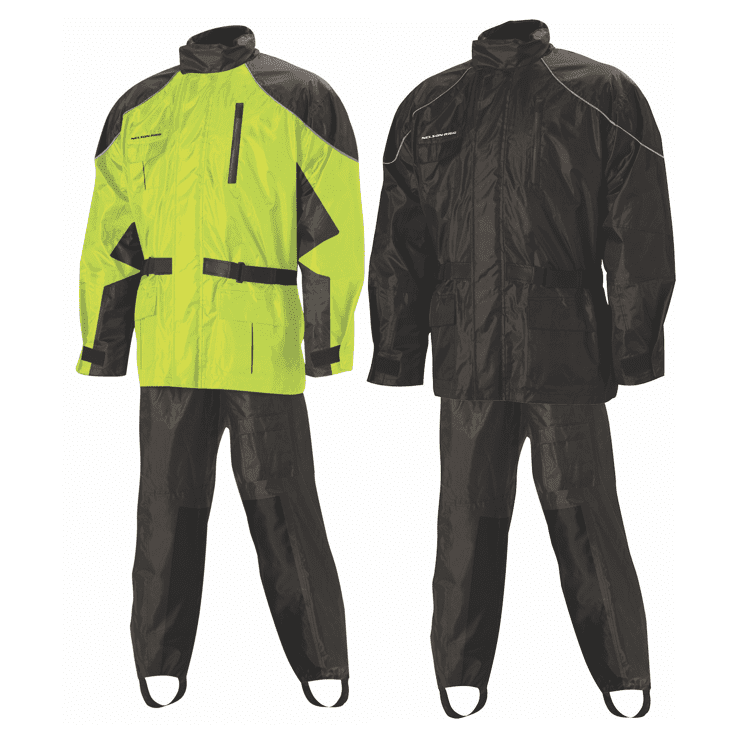
The main advantage of wearing a rain coat or pants is that they are usually made of plastic or rubber which are “virtually” waterproof.
I say “virtually”, because you need to ensure the jacket and pants overlap and there are secure cuffs, pant bottoms and collar closures to stop the water getting in. Obviously you need waterproof gloves and boots as well.
Covers are also the cheapest option and can be worn over just about any type of gear. Even MotoGP racers will sometimes wear them.
When the wet weather stops, take them off, flick them out to dry and pack them away. Easy!
But there are several disadvantages with this gear, the first of which is that they are bulky and take up valuable luggage space.
They are often difficult to pull on over your gear and require you to take off your boots while standing in puddles of water at the side of the road.
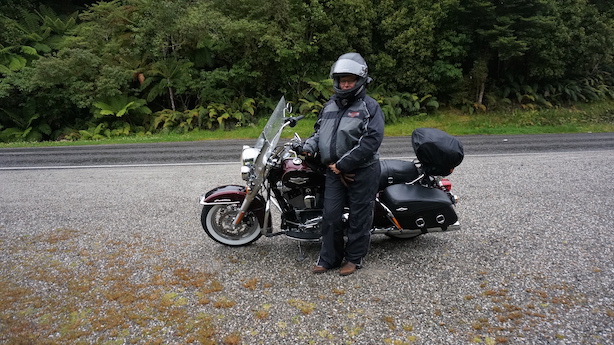
Make sure you get pants that have long waterproof zips up the legs so you can put them on without having to remove your boots.
Since they are waterproof, they also don’t breathe and in summer storms, you will sweat and boil.
On the flip side, as they are windproof, they create an extra layer of warmth in winter even when it’s not raining.
They are also fairy loose and flap around a lot which can be annoying, tiring and the flapping bits can get caught in footpegs, etc. Some come with tabs to pull them tighter.
Many modern rain coats and pants feature a mesh lining that not only makes them easier to pull on and off, but also creates an air layer that helps prevent sweating.
Liners

Many modern motorcycle jackets and pants come with zip-in liners for both thermal comfort and moisture protection.
The liners don’t have to withstand the exposure of an outer rain coat, so they can be lighter and thinner material which makes them more comfortable and easier to pack away when not in use.
Gear with these liners can be reasonably expensive and you will find you only get what you pay for.
Check the IP rating and look for waterproof zips and tape over seams to ensure no leaks.
Some will have their own internal pockets. Otherwise, they will prevent you from accessing the pockets in your main jacket which can be a nuisance.
The biggest disadvantage is that the outer jacket and pants still get wet.
This not only makes your gear heavy but will also introduce substantial windchill on a wintry day.
And when you get to your digs for the night, you will have a saturated jacket and pants to try to dry overnight before the next day’s adventures.
You can probably tell that I am not a fan of liners.
Manufacturers often claim the liner makes them suitable for all seasons.
However, I reckon anything that claims to be suitable in all conditions is usually a compromise.
Laminated gear
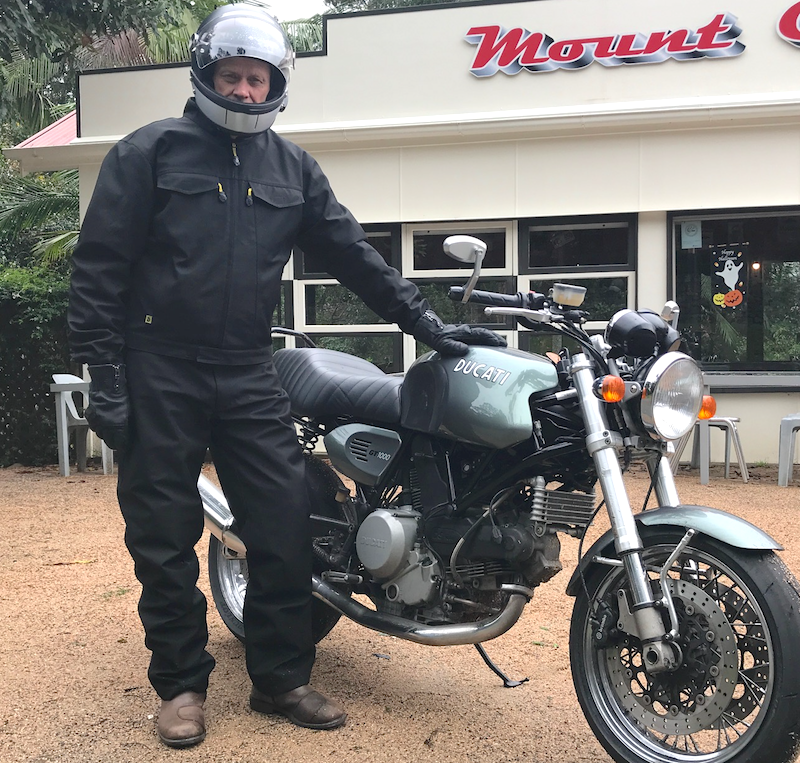
These jackets and pants are super-hi-tech with material that not only keeps out water, but allows your skin underneath to breathe and not sweat.
They have tiny holes that are small enough to prevent water coming in but still allow body heat and vapour to escape.
Some even have vents to keep you cool in summer with a storm flap over the top to keep the wet weather out. Clever!
However, I’ve found that in areas where the material is pulled tight against your body, such as at the elbow, knee or your backside, the moisture can still get in.
Since you don’t need to carry extra layers and liners, there is no impact on your luggage space and they are the most convenient option as you don’t have to stop and zip in a liner or pull on a covering.
They are often quick drying and usually coated with an extra moisture repellent.
Although if you get off your bike after a ride in the rain and walk into a cafe, you will still leave a small puddle of water on the floor!
There are three big disadvantages with laminated gear: fashion, cost and effectiveness.
Ok, ok, I know. You don’t care about fashion.
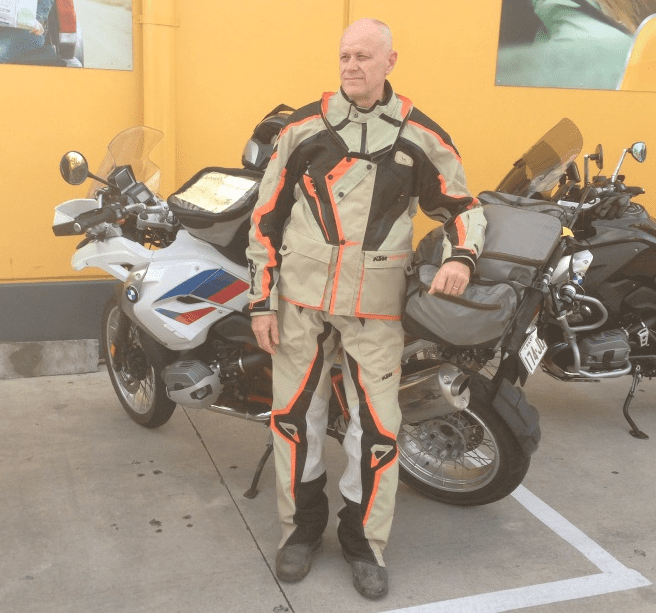
But do you really want to look like you are about to participate in a military band parade?
Most of these laminated jackets and pants simply look ridiculous.
If you don’t care what you look like, you may still care about the cost as laminated gear is the most expensive option.
In this case, cost and effectiveness against wet weather go hand in hand.
There is a vast difference in effectiveness related to cost.
While laminated suits are getting cheaper each year, a bargain outfit will not protect you from anything more than light showers.
If you want decent ingress protection, you can pay several thousand dollars for a full suit. And the more effective it is, the stiffer the material which makes them quite uncomfortable on a long trip.
Conclusion
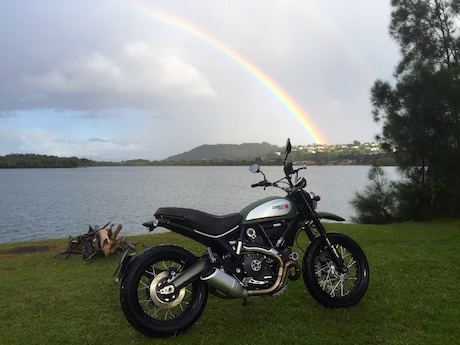
It really depends on the type of wet weather, duration of your ride and your style of bike, but I still reckon a rain coat and pants is the best option.
If you can’t fit it in your luggage, put it in a plastic bag and tape it to your tank!


